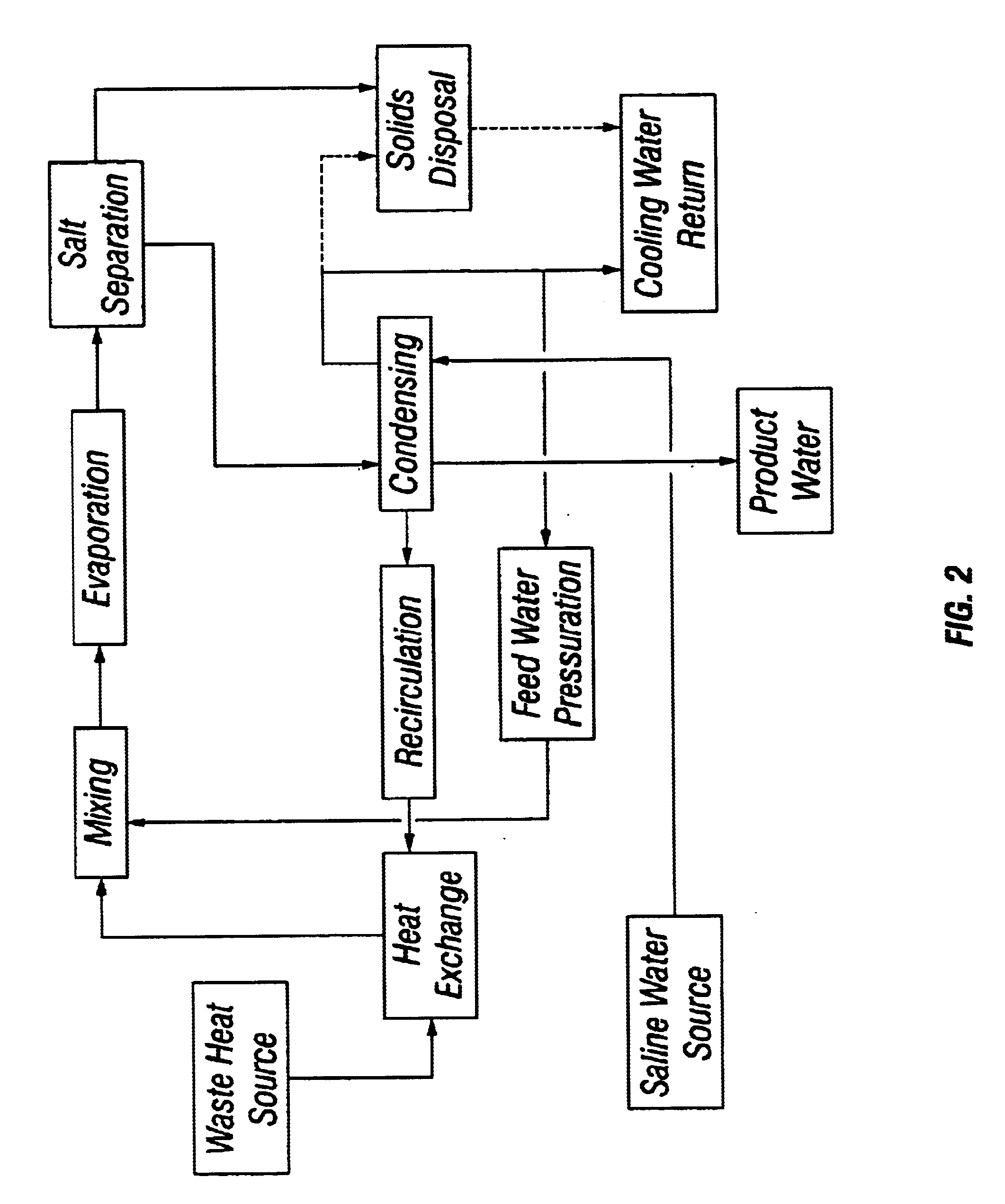Apparatus and method for thermal desalination based on pressurized formation and evaporation of droplets
a technology of desalination apparatus and droplet, which is applied in the direction of boiling apparatus, solid separation, different sedimentation, etc., can solve the problems of low efficiency, 35 gallons of distilled water, and the method produces desalinized products at only about 35% efficiency
- Summary
- Abstract
- Description
- Claims
- Application Information
AI Technical Summary
Problems solved by technology
Method used
Image
Examples
example
It is assumed that the available waste-heat source provides for heated air at 250F. Requiring that the temperature of the air entering the heat exchanger, as well as the air exiting the condenser, is 100 F at 100%. relative humidity (RH), the enthalpy of the entering air accordingly is 62.8 BTU per pound of air. (Values used for enthalpy and humidity are taken from a "Humidity Chart for Air and Water" in "Chemical Engineering Reference Manual" 4th edition, by Randall Robinson, PE. The chart is based upon thermodynamic data for air and water, the latter from the Keneen and Keyes steam tables published in 1936.)
The heated air temperature is 250 F and the heated air enthalpy is 105 BTU per pound of air. The evaporation temperature, i.e., the temperature of the water vapor and air entering the condenser, is 123 F, at 90% RH.
The difference in humidity of the air entering the condenser (90%RH at 123 F) and exiting the condenser (100% RH at 100 F) is:
0.080-0.043=0.037 lbs of water per lb o...
PUM
| Property | Measurement | Unit |
|---|---|---|
| Pressure | aaaaa | aaaaa |
| Pressure | aaaaa | aaaaa |
| Pressure | aaaaa | aaaaa |
Abstract
Description
Claims
Application Information
 Login to View More
Login to View More - R&D
- Intellectual Property
- Life Sciences
- Materials
- Tech Scout
- Unparalleled Data Quality
- Higher Quality Content
- 60% Fewer Hallucinations
Browse by: Latest US Patents, China's latest patents, Technical Efficacy Thesaurus, Application Domain, Technology Topic, Popular Technical Reports.
© 2025 PatSnap. All rights reserved.Legal|Privacy policy|Modern Slavery Act Transparency Statement|Sitemap|About US| Contact US: help@patsnap.com



